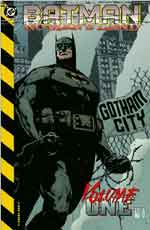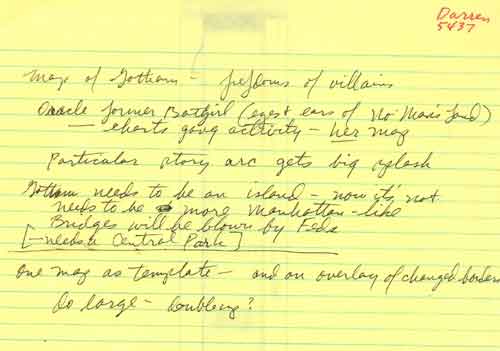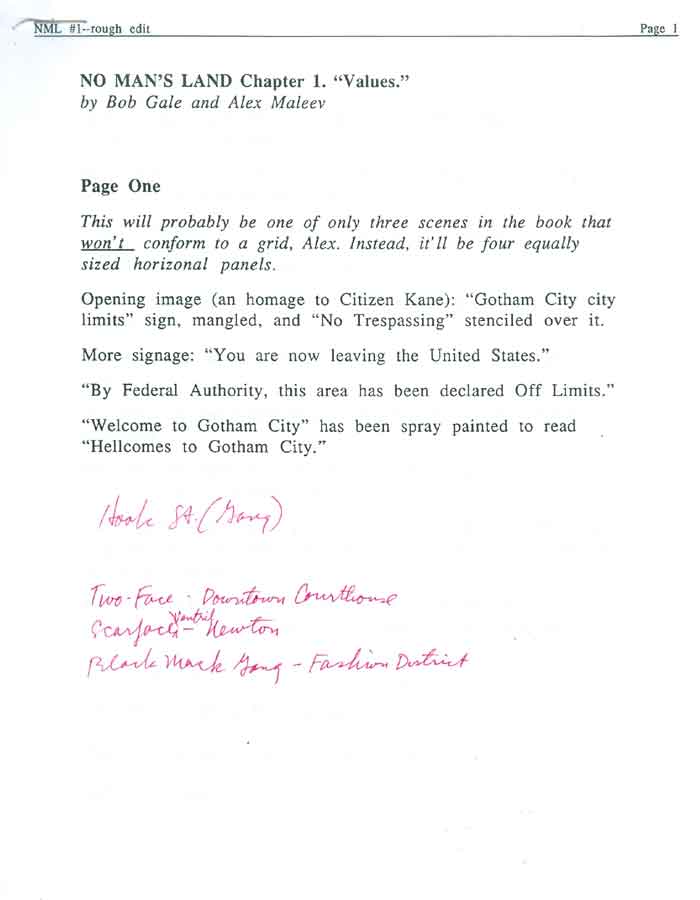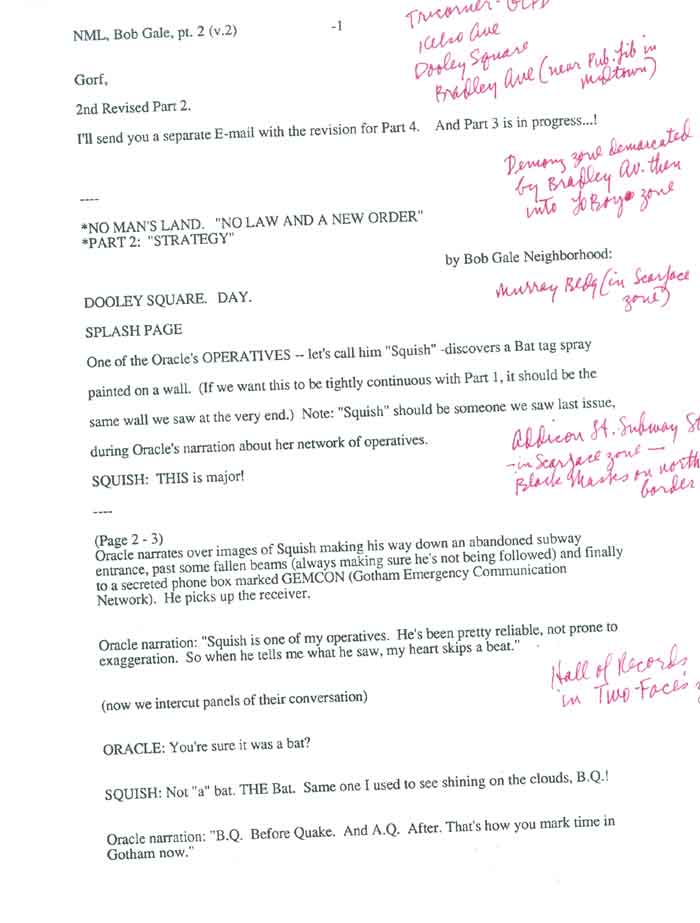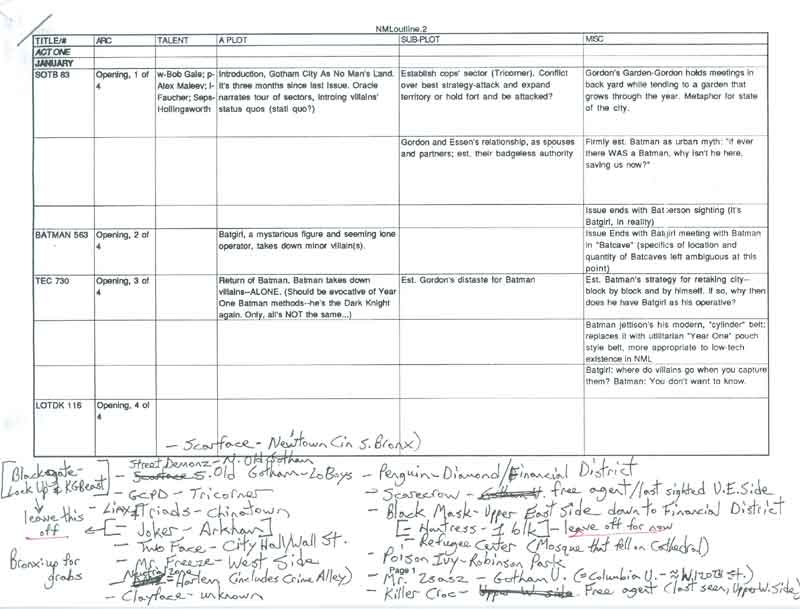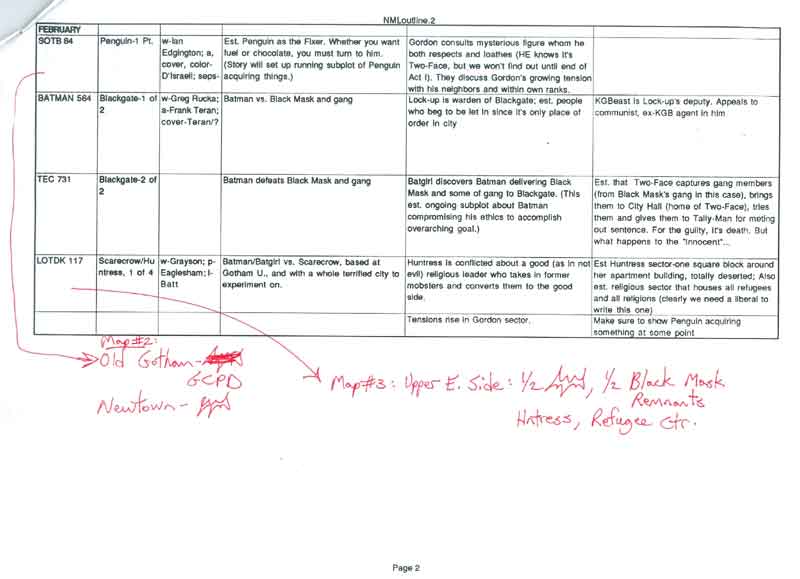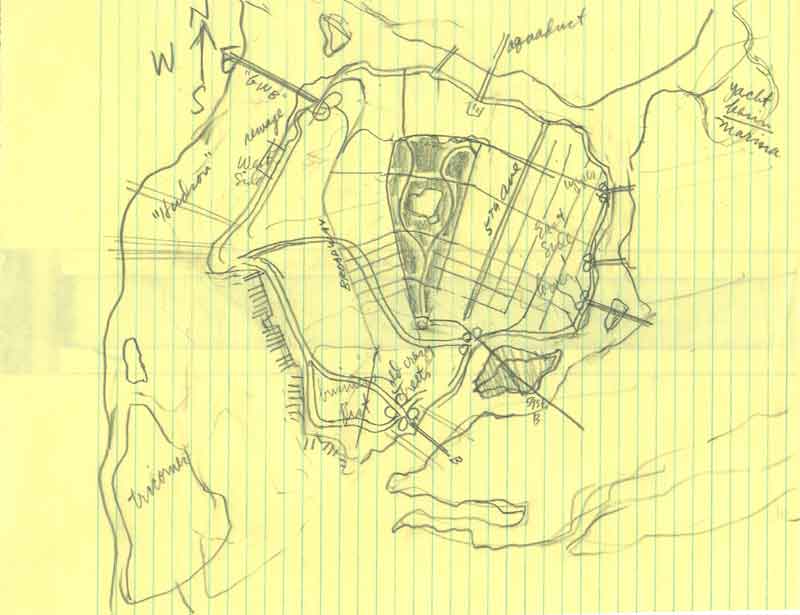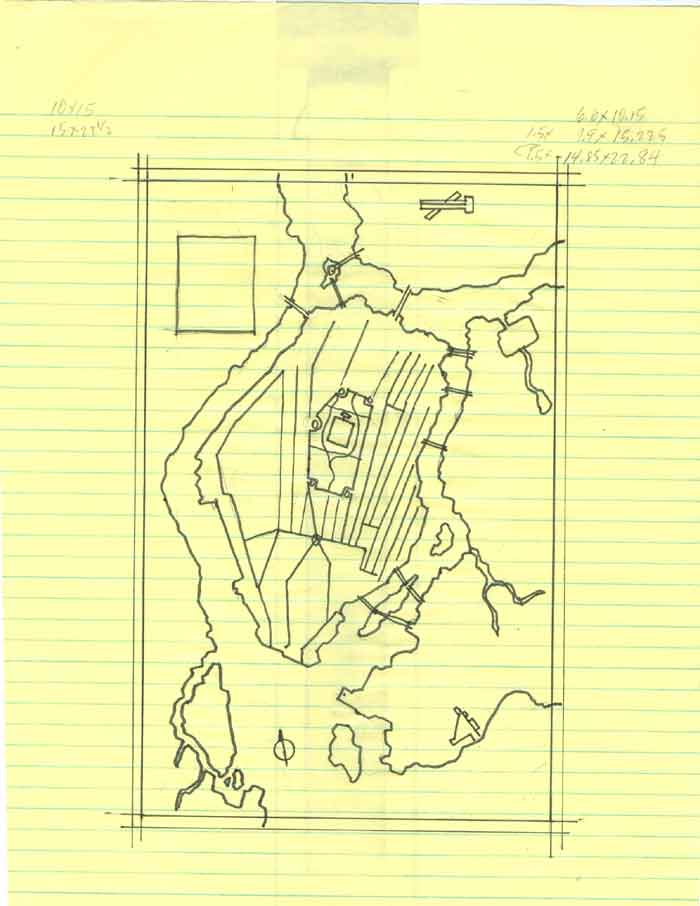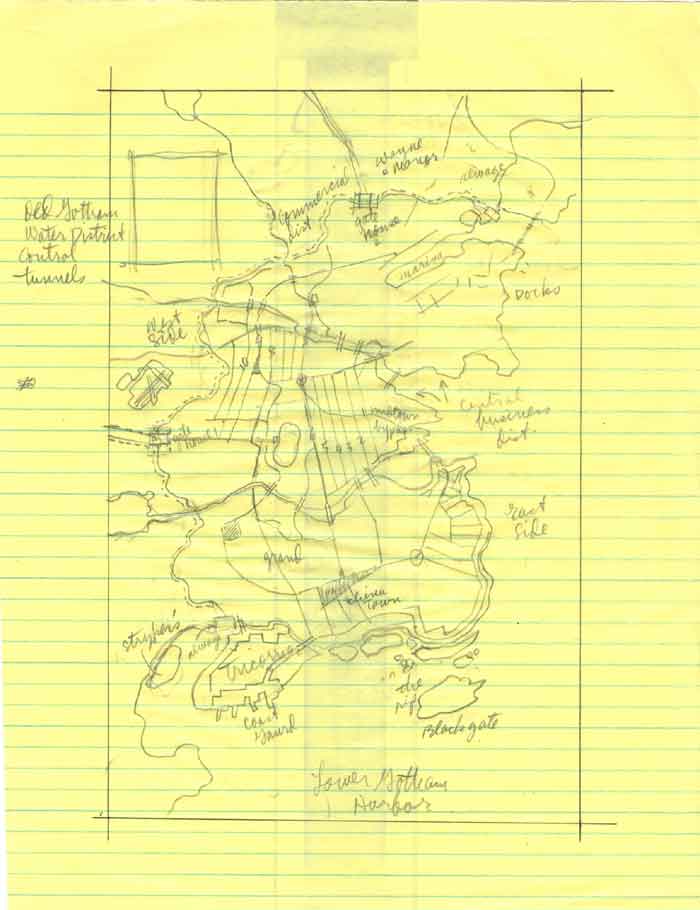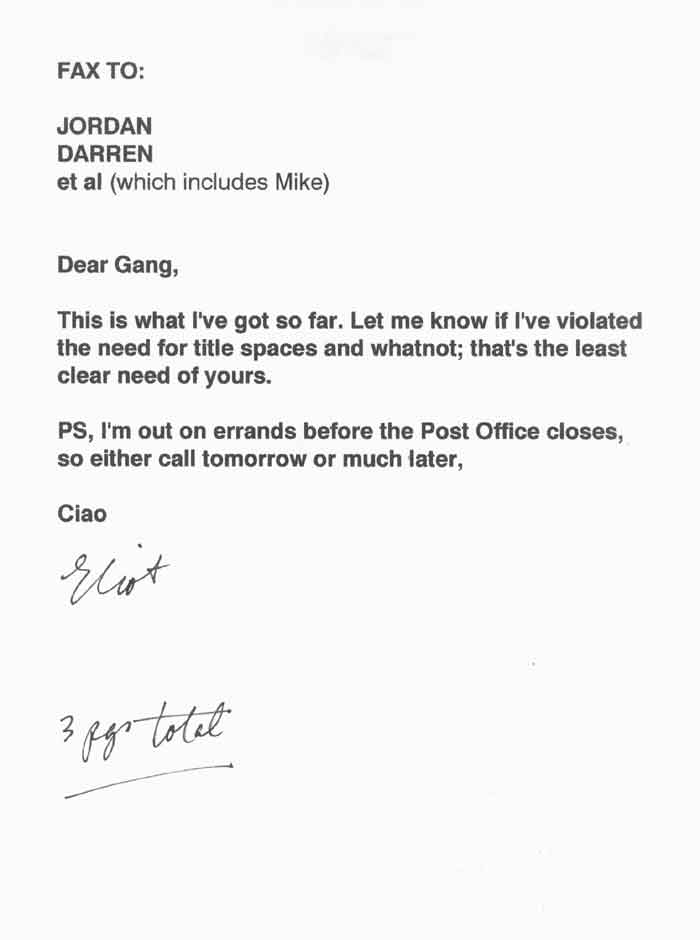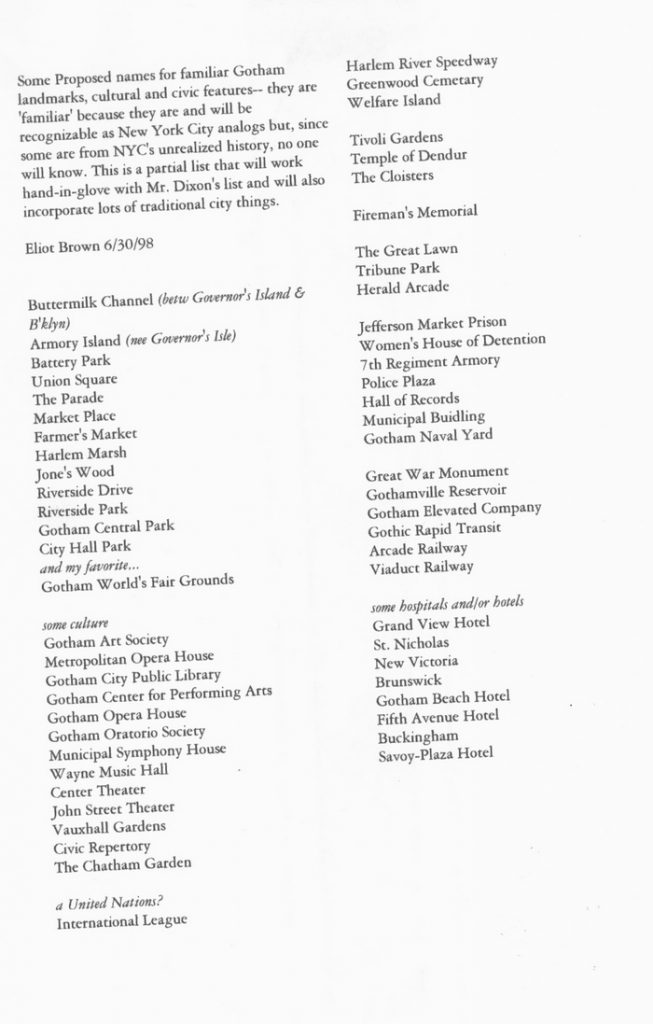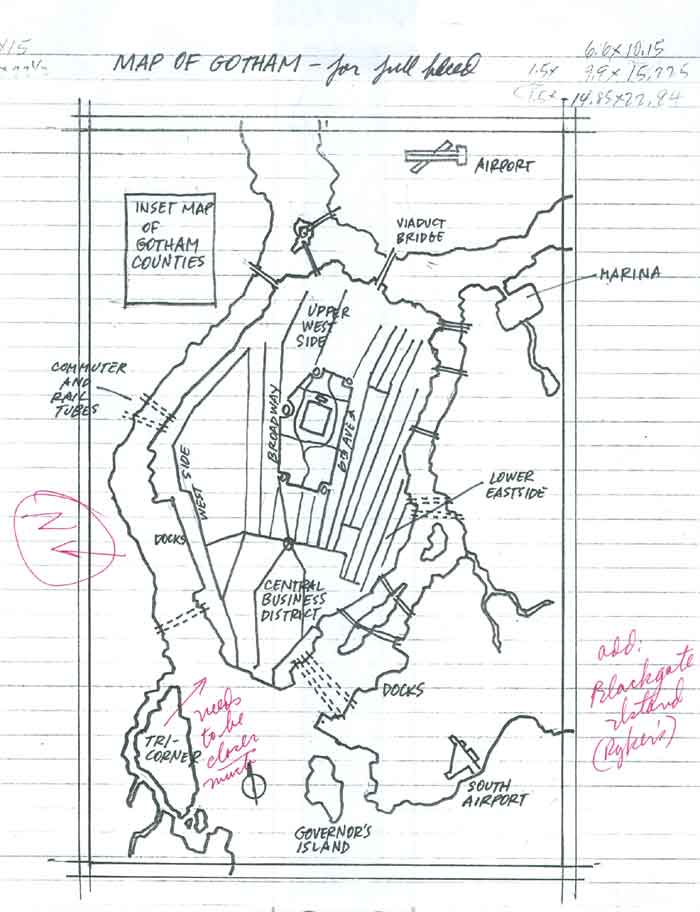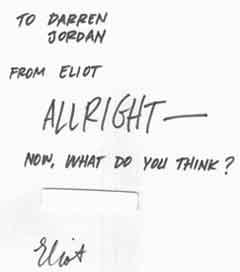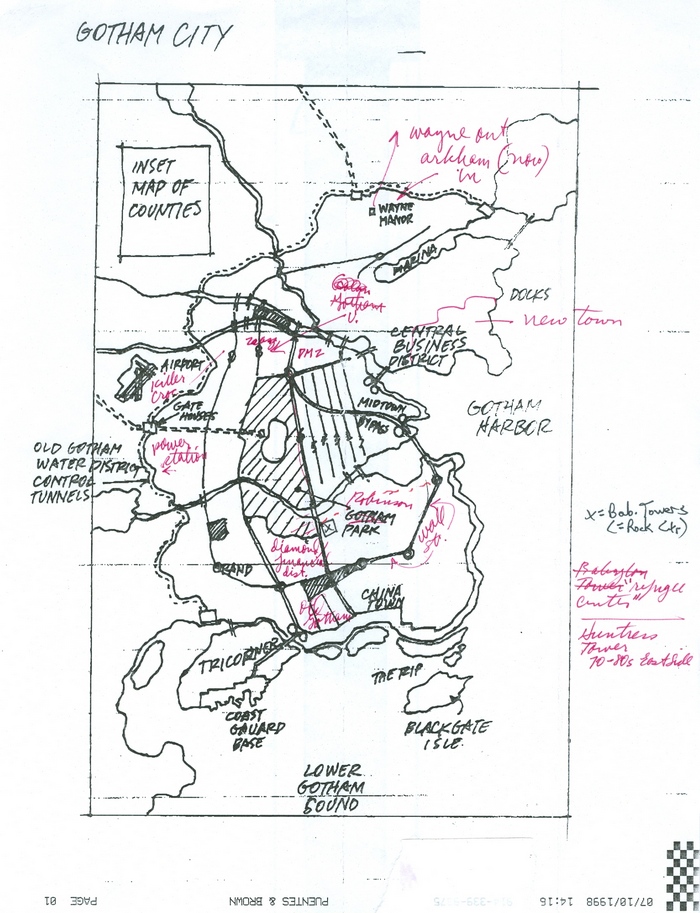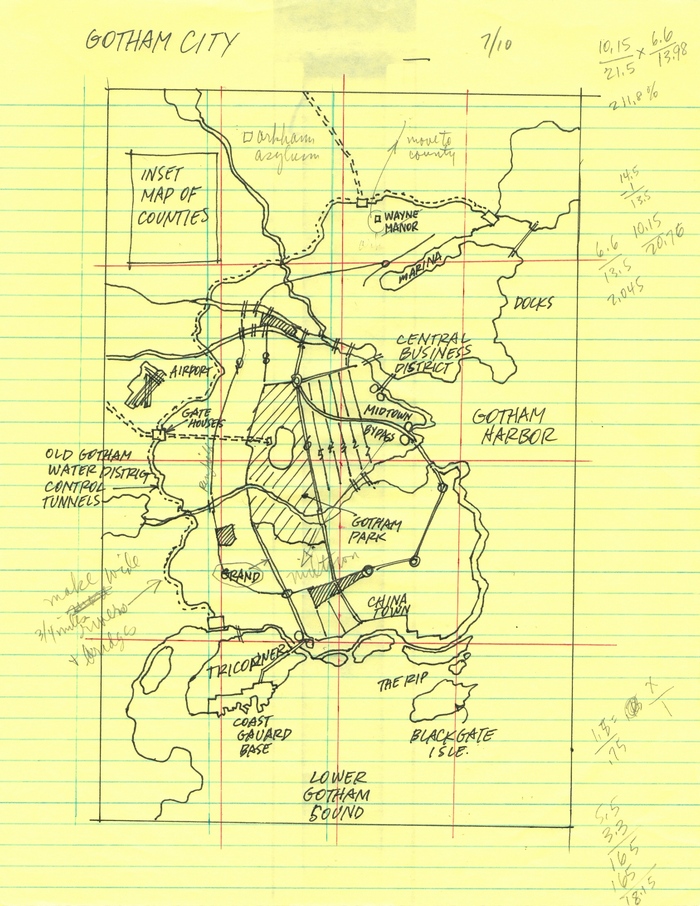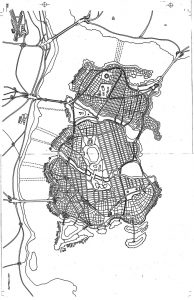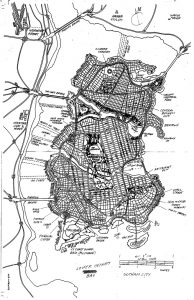The Story Behind Batman’s Famous Gotham City Map
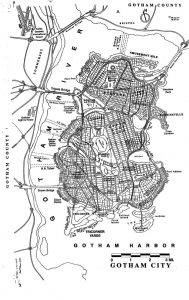
DC Comics’ Gotham City map was generally designed for the time in and around the “No Man’s Land” or “Cataclysm” series. Unofficially known as “Escape From Gotham City” after the John Carpenter cult fave movie, “Escape From New York.”
Batman’s Gotham City is hit by an earthquake! Much of Gotham City is in ruins including Batman’s Bat Cave! The fate of Batman and Robin is unknown… The worst criminals, low-lives, thieves, punks and suddenly-released Arkham Asylum inmates are on the loose.
What do you do?
That’s where my part of the story starts. In late 1998, I got a call from Denny O’Neill, legendary comic writer, creator and then Group Editor of Batman at DC Comics. I scuttled into town; when Denny calls I respond.
A map of Gotham City was needed to show an indeterminate version of the situation. Basically all of Gotham City was to be an island — similar to, but not very much like Manhattan and the other four boroughs. (For those of you who read from afar, New York City as a title refers to the five boroughs. Boroughs are almost like small towns, in New York’s case very much with their own character and legends. Manhattan, The Bronx, Brooklyn, Queens and Staten Island. For this new, more specific version of Gotham, elements of all five boroughs would be coalesced into Batman’s stomping grounds. I would, of course, lean heavily on my intimate knowledge of Manhattan Island, where I grew up and resided for a long time.)
So, Batman’s Gotham City was to be an island. This was so the federal government could dynamite the bridges and tunnels so as to cut off the island from the mainland. This would keep the lid on the pressure cooker of this huge criminals’ playground, forcing drama, ethos and pathos (and that other Musketeer I can never remember…) brought on by the remaining innocent citizens trying to survive. The feds just walled off this ‘no man’s land’ from the rest of America. Sounds a little extreme, but who am I to think it daffy? Made for an interesting enough run of stories. So all these criminals, many super-criminals, only whatever police crazy enough to stay behind and no National Guard, nobody in charge… just lots of bad guys —
Did I mention without Batman? Or Robin? For several issues?
Okay — I was ushered into a middling-sized conference room at the DC Comics’ editorial offices and all the editors filed in. Denny ran in, listened for a bit and then declared we didn’t need him! Off he went. Denny was the ring-leader of all the various planning of stories and events, special projects and coping with the angst of all the writers and artists for this big DC happening. He was a busy guy. The other Batman editors and assistants began talking of their wish lists. I wrote a few things down. See the notes I took at that meeting (below). I was assured that I would get a list of place names later, so I really took it easy. From the way the guys were hollering at me, I must’ve been asleep because my notes were skimpy.
The DC Comics editors made it clear that Gotham City was an idealized version of Manhattan. Like most comic book constructs, it had to do a lot of things. It needed sophistication and a seamy side. A business district and fine residences. Entertainment, meat packing, garment district, docks and their dockside business. In short all of Manhattan and Brooklyn stuffed into a … well, a nice page layout.
The DC Comics editors plopped a pile of scripts in my hand. I was surprised to be given the “Top Secret” full-scripts, but delighted to get an early eye-full of the plots. I used them for note-taking in that hectic meeting. I present the first pages of the first two plots with my scrawl on them. When I got home I read them and extracted what I could from them. (Yes, yes; they were poignant, moving, tear-filled and uh, y’know — uh, comic-y.) They were mostly written by film legend Bob Gale, with Alex Maleev on the first book.
I was also handed what I believe was Jordan Gorfunkle’s personal copy of the “No Man’s Land” plot rundown and cross-overs. I present those first two pages here as an insightful peek deep into the wiles and ways of DC editors back before the turn of the Millennium. They loved their spreadsheets …
I assured the guys that I would be a thoughtful map-maker, cadged a lunch, swiped some comics and made my way home.
I was also handed what I believe was Jordan Gorfunkle’s personal copy of the “No Man’s Land” plot rundown and cross-overs.
Not long after that, I got a huge list of place names from one of the big talents in comics, Chuck Dixon. I absorbed that creative and accommodating list of names — a good list like that makes my work much easier. I started sketching.
This was done at breakneck speed (for me!) probably within a week.
I finalized my version of Gotham City’s place name notes, tightened up the sketch of the Gotham City map and faxed them off to the DC Comics office (in those pre-internet days … ).
Now, I will bare all here and reveal that I cannot stand for toe-nail-paring nutlogs like editors to ask for changes in my work. That sounds a little harsh, but consider a couple of things; If they provide me with enough information, the correct information, I cannot help but give them something that will “do” what they want. I add things that give the greatest range of possibilities and leave enough things blank or vague — and this is true of most of my work, not just maps or city design — to allow any writer to dive in and swim around. If they choose to use it so. And this brings up the main point. As hard as I might try to follow the word of every writer that has written, or artist that has drawn and yea, every editor who has thought about the subject — a new writer will come along and decide their way is better yet.
What I “mean” mean is that if they want changes after I have digested all the reference they gave me, then they haven’t given me everything they should have.
I explain all this because the tone of this fax cover page, dated 7/10 [1998], (left) to the DC Comics office is a little testy …
This draft of the Gotham City map (center) is dated “7/10” [1998], so I must’ve been really flying. The map had been sent back to me with notes in black ink — I called, made further notes in red ink, made the next draft (right), and sent it all back to them to chew over.
Finally, whatever passed for approval was given, because I finished the Gotham City Map fairly quickly. (left) The back is dated “9/2/98″ but that may be the day I handed it in. I rendered the Gotham City Map on a 23″ x 14.5″ artboard. That’s a little larger than the standard 11″ x 17” size. I chose to work larger so that the lines would stay neat when reduced to printed size.
Above are my handwritten Gotham City place name annotations (center). I handed these over to DC Comics’ production department for proper type placement. They had the ability to lay in type in a large digital file and I did not.
Above is the Gotham City Map as you may have seen it printed (right). I have not compared my various generations of maps to this final compilation. I assume the office guys had one more go at it. I do see that they eliminated some of the street numbers and minor place names — which is too bad. I think they simply did not have access to enough maps to see how cartographers deal with tiny type and twisty, turny street shapes. Oh well, for something like place names, I have no problems with them tossing stuff in or out. Their word on such things is final.
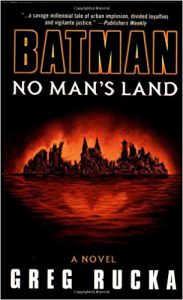
ISBN-13: 978-0671774554
The Gotham City Map was reprinted by DC Comics several times and to my delight, it appears in Greg Rucka’s novel, “Batman No Man’s Land.” I love the fact that they left my signature on the page. The Gotham City Map also appeared in “Batman Gotham City Secret Files & Origins” no. 1, April 2000. In that version Gotham City’s place names are numbered to reference them to a place name key at the bottom of the page.
Notice Gotham City’s strong resemblance to Manhattan. There are many bridges and tunnels connecting Manhattan Island to its neighboring land forms. Even a few tunnels the general public doesn’t know about. I hope I’ve provided the means by which The Batman and perhaps any number of others to surreptitiously sneak into and out of Gotham City by means of old steam tunnels. There is supposed to be such a thing under the East River (for real — why make something up when it’s true!). Despite the mirror image of Manhattan’s East Side, now facing West, one can see several docks and bridges, like the Manhattan Bridge, Brooklyn Bridge and even the vast and spaghetti-like Triboro Bridges. There’s a large sporting stadium to the north.
Any historian of comics will instantly recognize the names of the many, many creators who have toiled under the watchful eye of The Batman. One creator, who I knew personally and who passed on too soon, but near the time of the making of the Gotham City Map was Archie Goodwin. The DC Comics editors named the big airport after him.
Manhattan is criss-crossed and ringed with many highways, so I made sure to include as many as I could stuff in. I also added some Chicago-like bridges, right in the middle of town — most unlike Manhattan, only to add some story potential. Plus I like them.
I prepared for the Gotham City Map by reviewing some of the material I have on the Tim Burton “Batman” movie (you can buy it by clicking on the image to your left). The Art Director was the late Anton Furst, who established a lush, multi-layered confection of very old city and very new, but somehow never straying too far from downtown Manhattan. All those stone canyons and crooked streets do spell a certain time in Manhattan. In many ways, I believe, Furst set the tone for the strong revival the graphic Batman underwent — but don’t forget Frank Miller’s “Dark Knight” guaranteed a new lease on life for the Batman. If his first one wasn’t dark enough, “Dark Knight 2” certainly was.
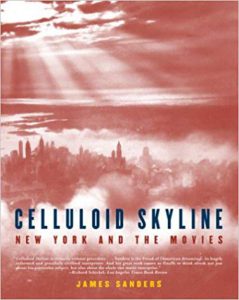
With all that in mind, I hoped that I had kept the evocative parts of Manhattan in. All those real places where people like Lester Dent, Damon Runyan, Bob Kane, Stan Lee, Nora Ephron, Chuck Dixon, Bob Gale and the hundreds of writers who have roamed those streets have swung a literary cat and hit the familiar. My friend, James Sanders, in his book, “Celluloid Skyline” claims that the mythic New York City is bigger than the real place. The filmed city is certainly better known. A Massai warrior might recognize the Statue of Liberty, without ever having seen her in person. A young Swede might know The Empire State Building — with or without a giant ape. New York as a “dream city” is well known to the world. The idea of New York City has been so widely disseminated through movies and TV, that the world has walked its streets. By adding a “Chinatown” or an “Upper East Side,” a “Diamond District” and a large, centrally located park to my map … I am suggesting that many people who have never set foot on Manhattan might feel right at home in Gotham City.
I know I do.
